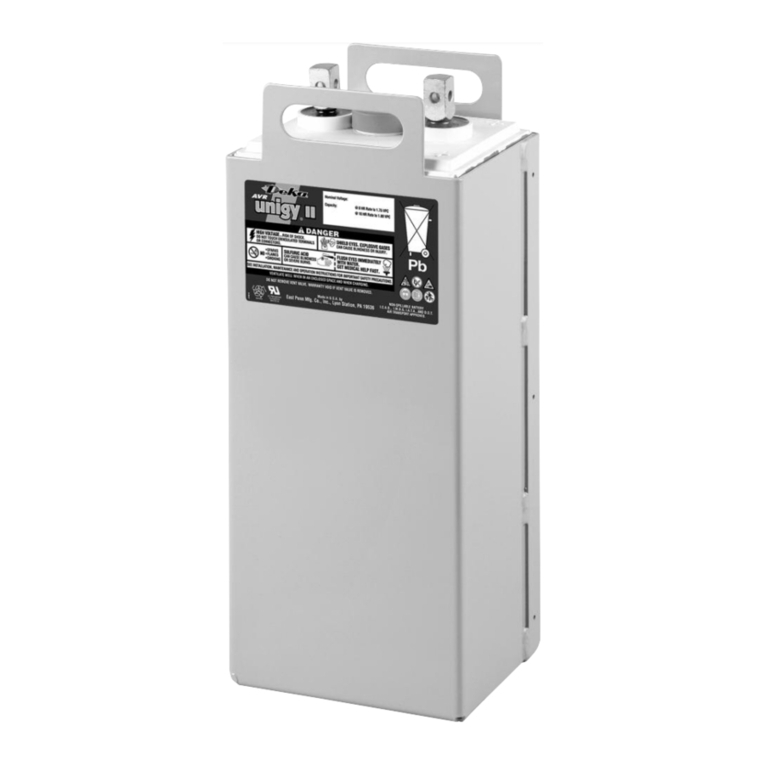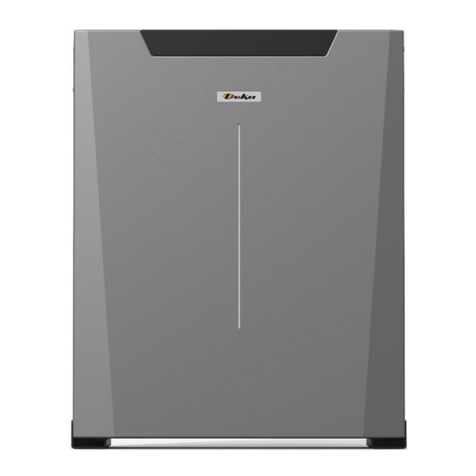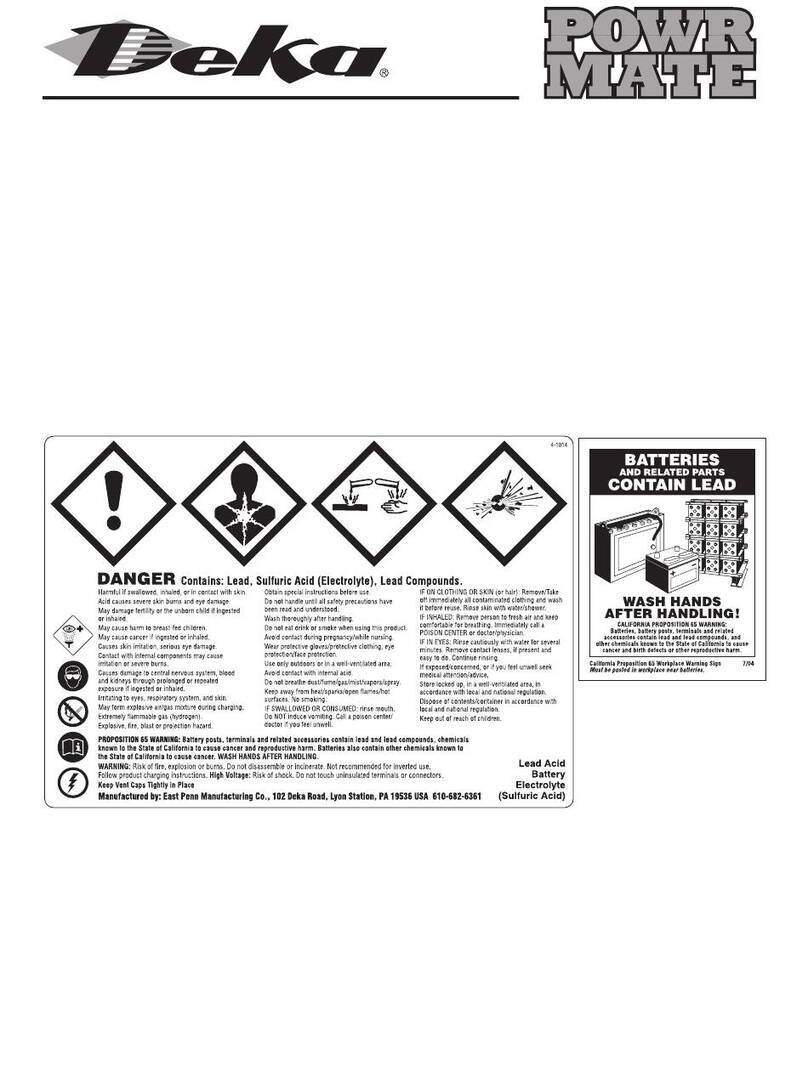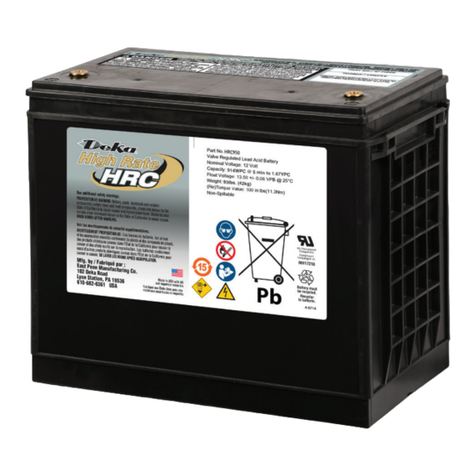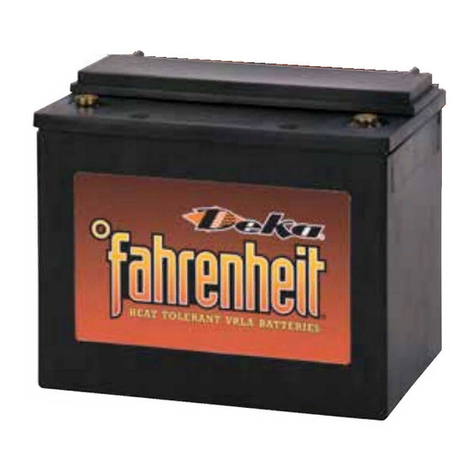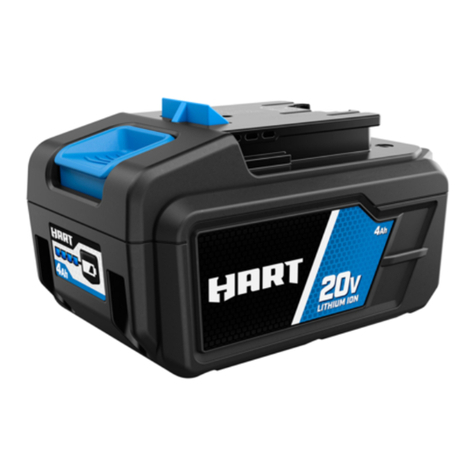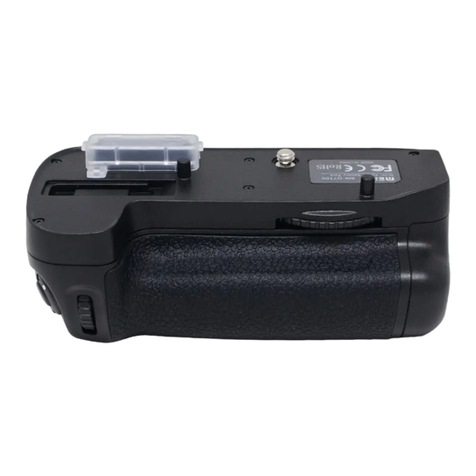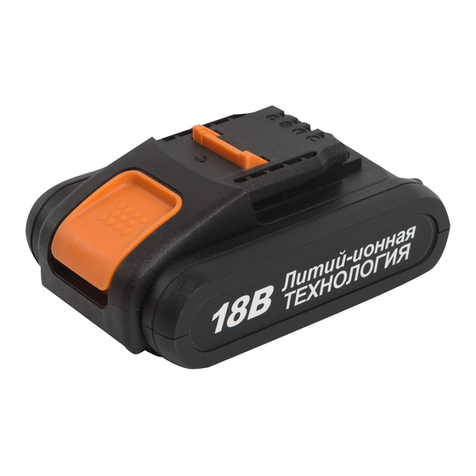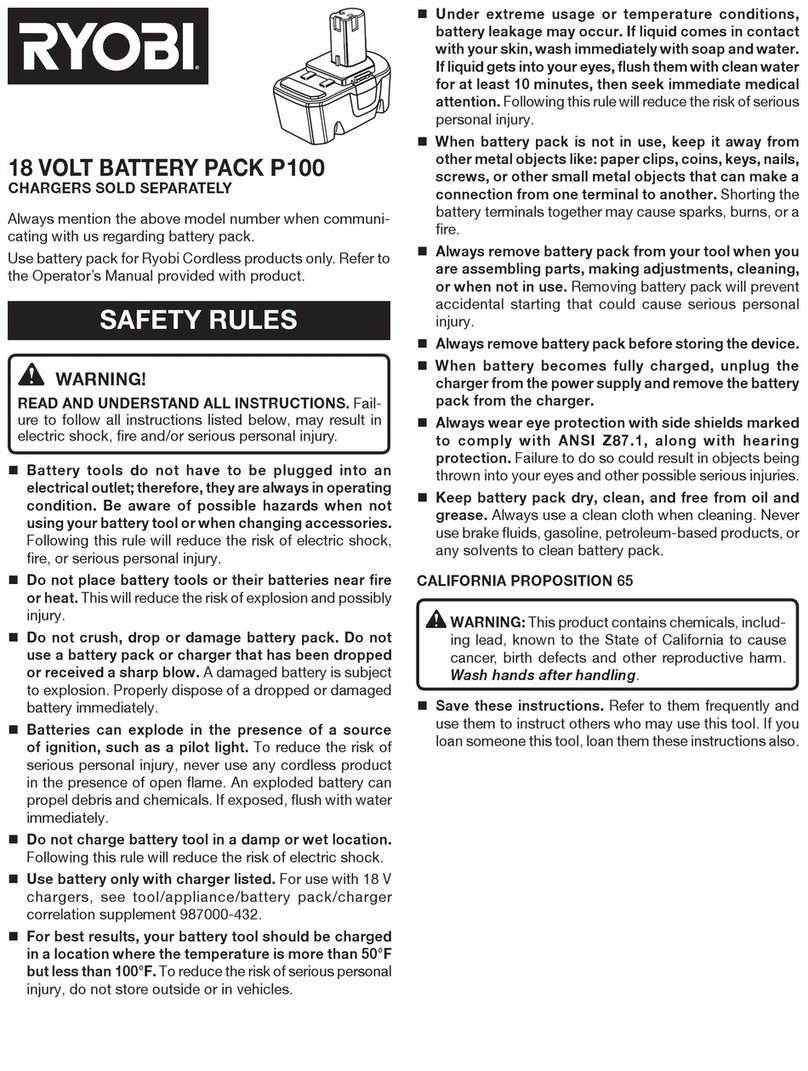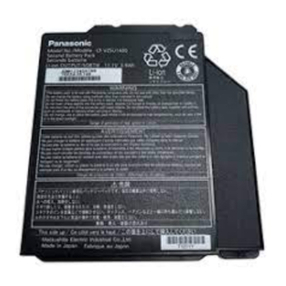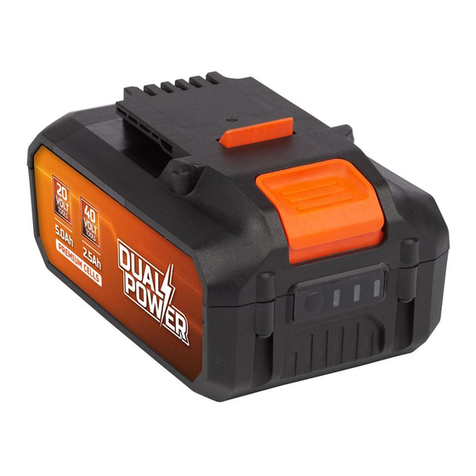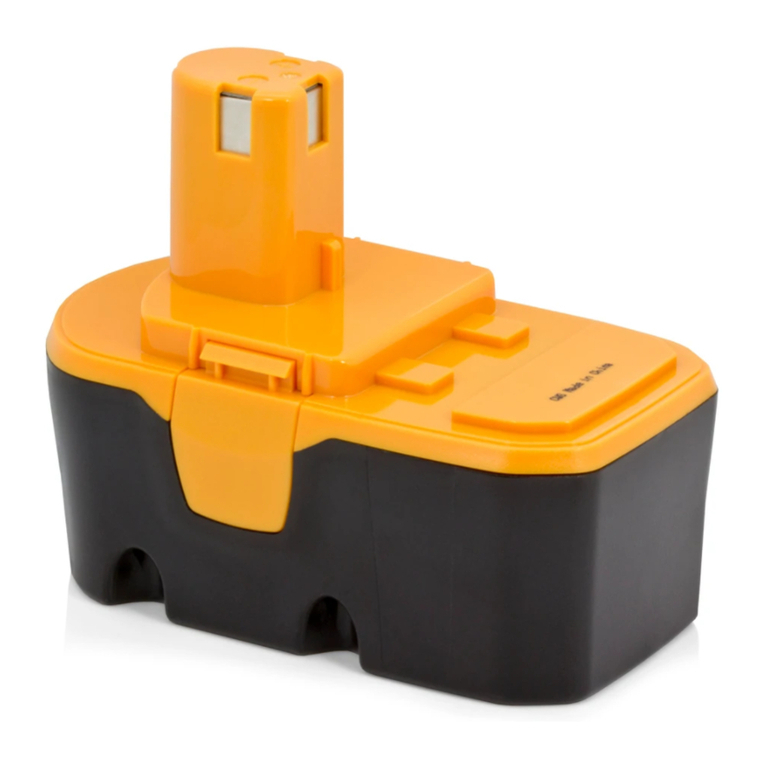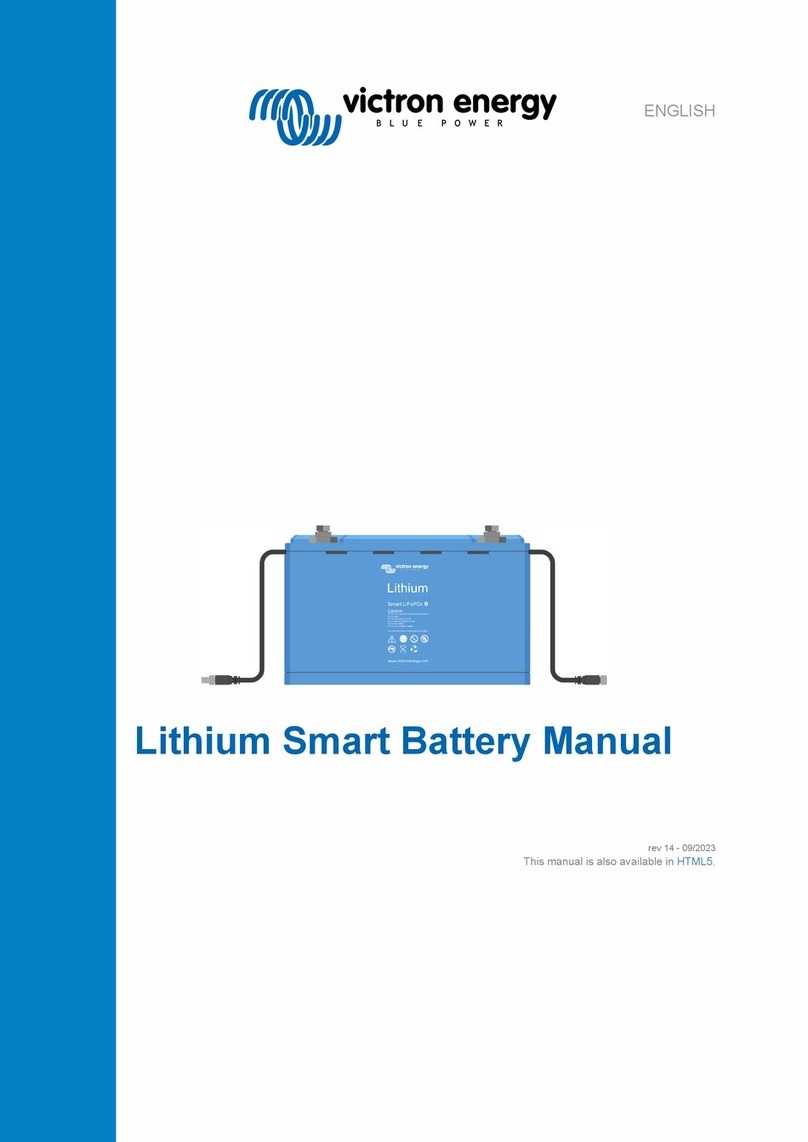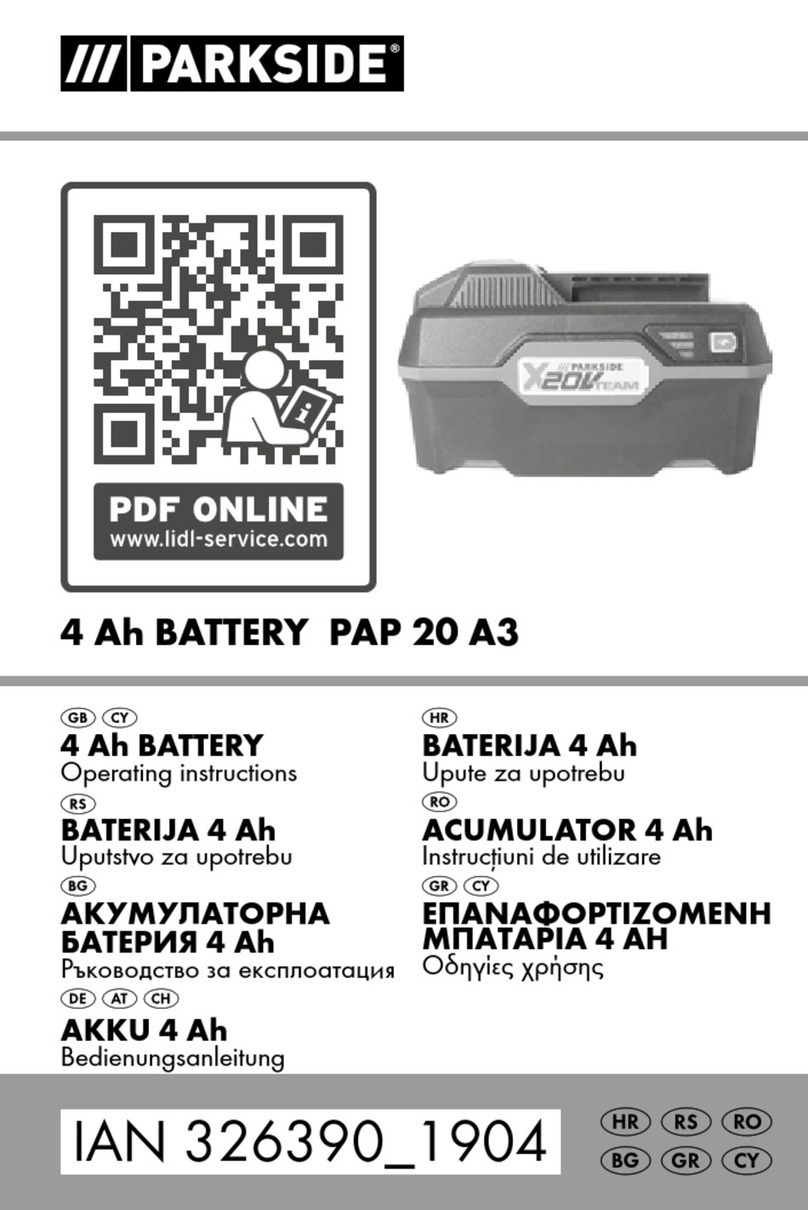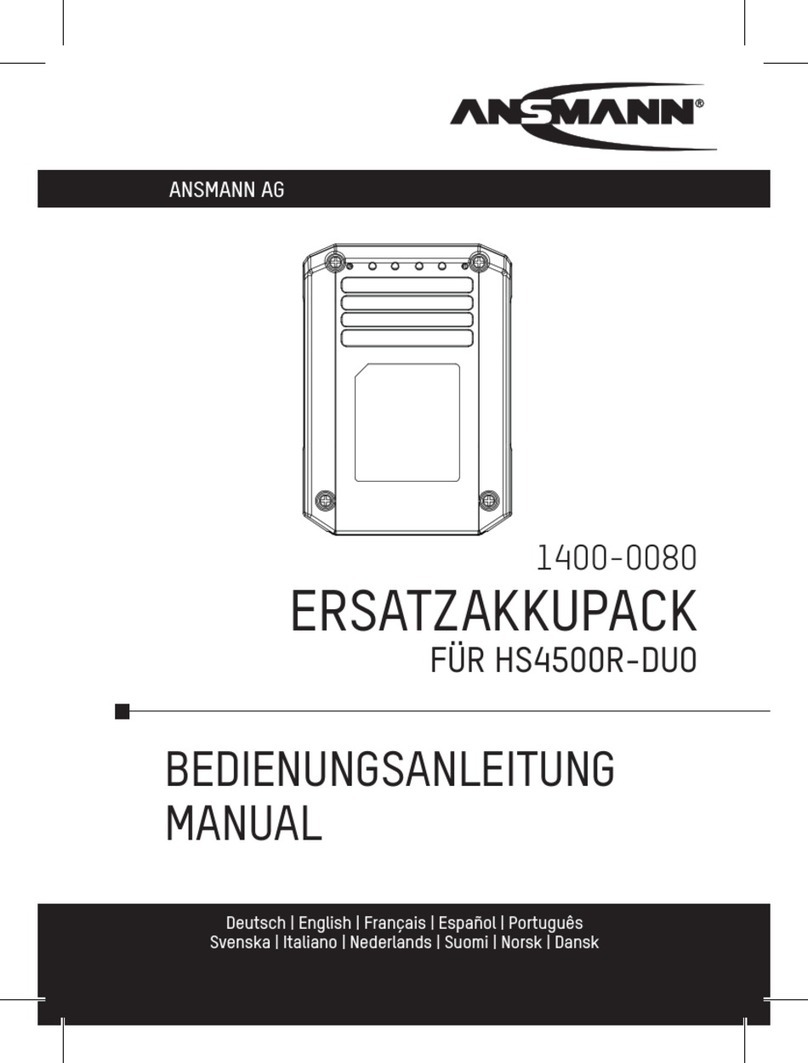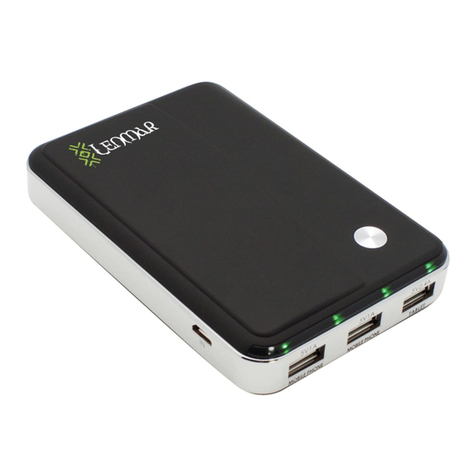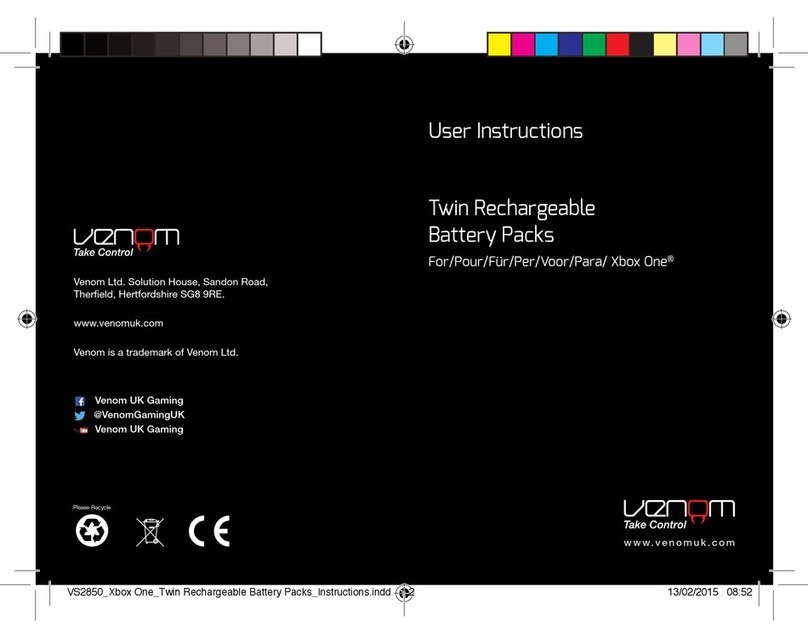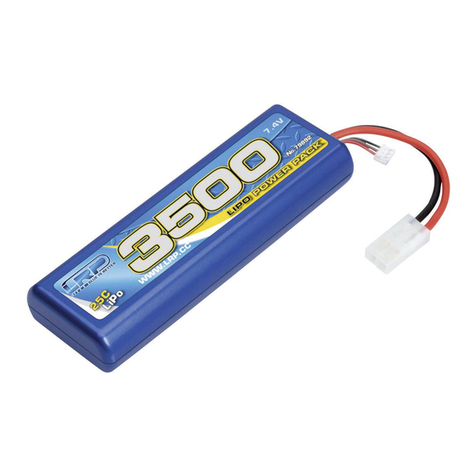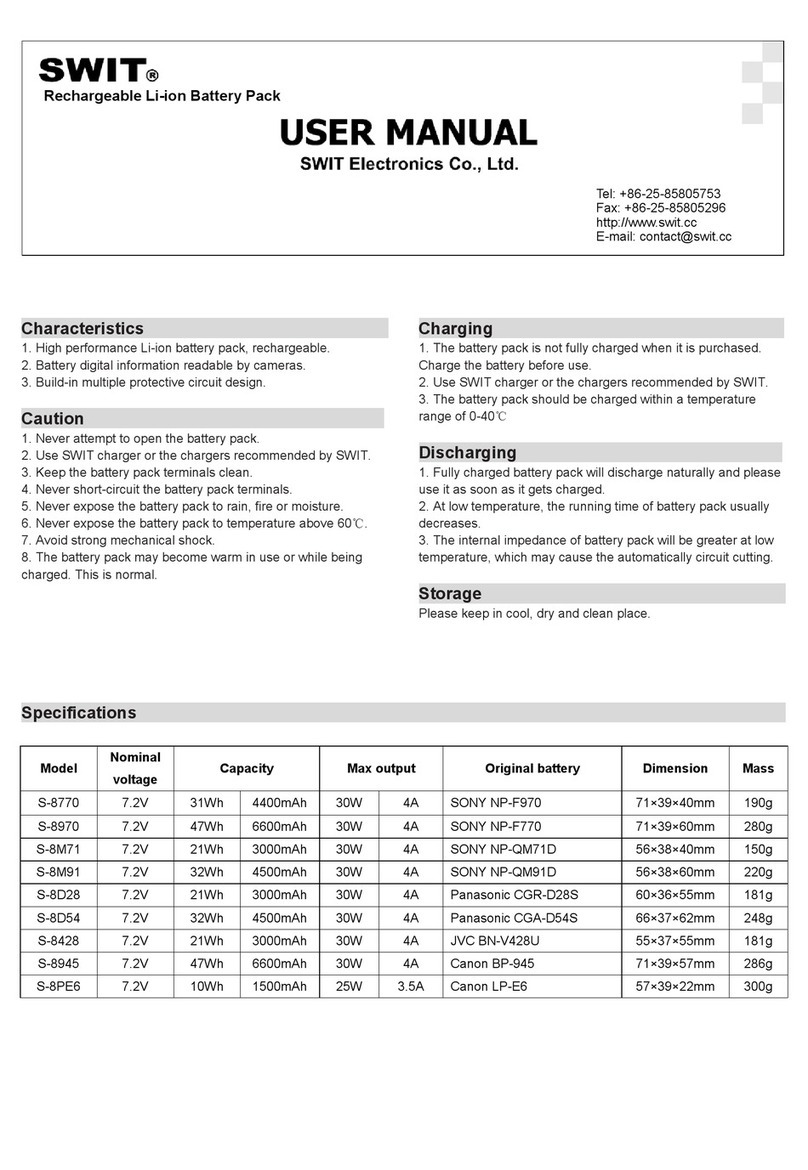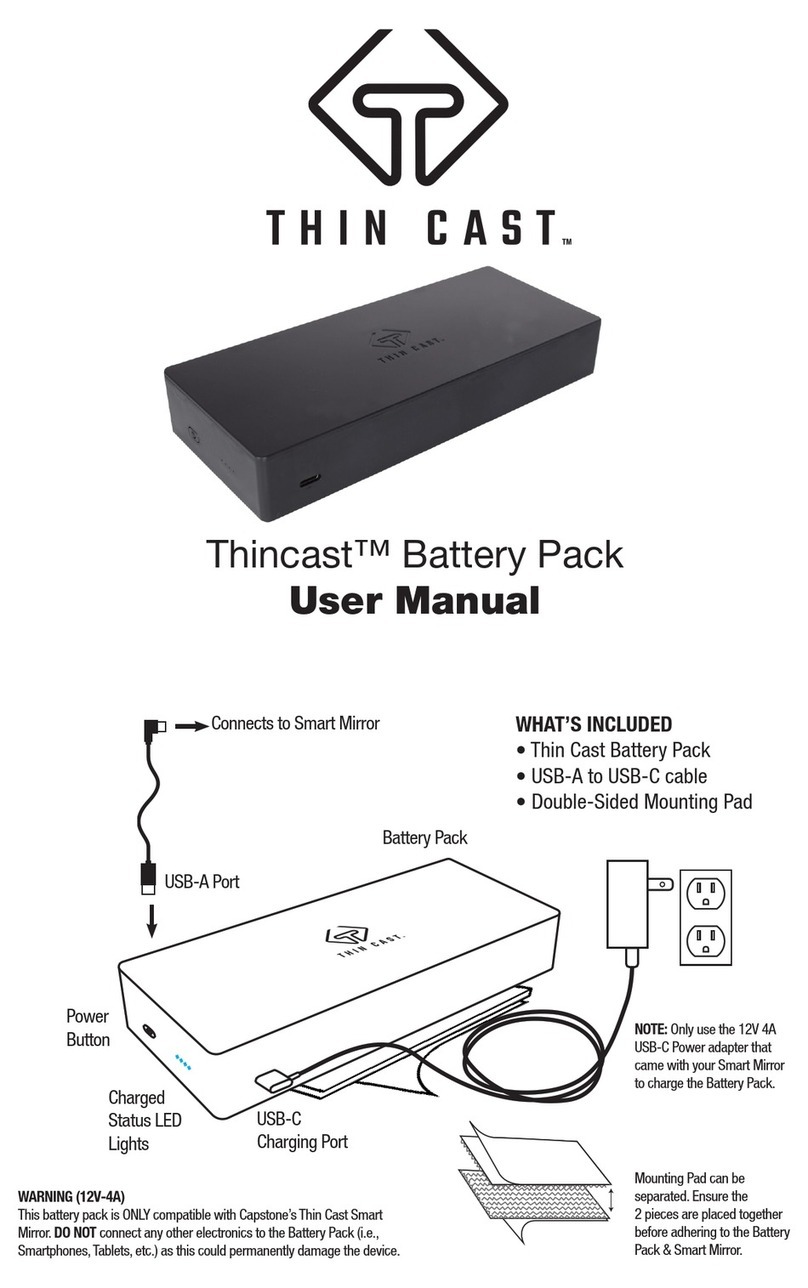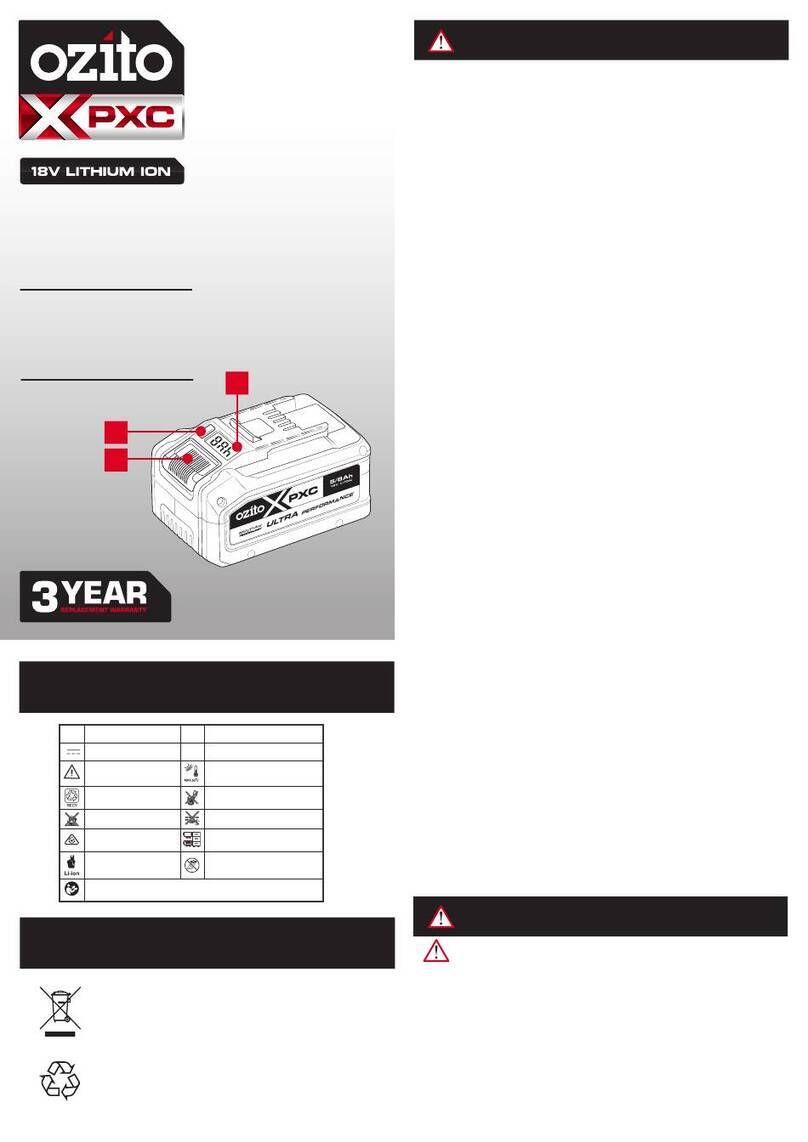Deka Unigy I 12AVR-125L User manual

1
12AVR-125L/LLP
12AVR-145L/LLP
FLUSH EYES
IMMEDIATELY
WITH WATER.
GET
MEDICAL
HELP
FAST.
SULFURIC ACID
CAN CAUSE
BLINDNESS OR
SEVERE BURNS.
NO
•SPARKS
•FLAMES
•SMOKING
SHIELD
EYES.
EXPLOSIVE GASES
CAN CAUSE BLIND-
NESS OR INJURY.
HIGH
VOLTAGE...
RISK OF SHOCK.
DO NOT TOUCH
UNINSULATED
TERMINALS OR
CONNECTORS.
DO NOT REMOVE VENT VALVE.
WARRANTY VOID IF VENT VALVE IS REMOVED.
VENTILATE WELL WHEN IN AN ENCLOSED
SPACE AND WHEN CHARGING.
SEE INSTALLATION, MAINTENANCE AND OPERATION
INSTRUCTIONS FOR IMPORTANT SAFETY PRECAUTIONS.
REPAIR SHOULD BE PERFORMED ONLY
BY A QUALIFIED SERVICE TECHNICIAN.
DANGER
SAFETY PRECAUTIONS
Although most valve-regulated batteries have the elec-
trolyte immobilized within the cell, the electrical hazard
associated with batteries still exists. Work performed on
these batteries should be done with the tools and the
protective equipment listed below. Valve-regulated
battery installations should be supervised by personnel
familiar with batteries and battery safety precautions.
Protective Equipment
To assure safe battery handling, installation and
maintenance, the following protection equipment
should be used:
1. Safety glasses or face shield
2. Acid-resistant gloves
3. Protective aprons and safety shoes
4. Proper lifting devices
5. Properly insulated tools
Procedures
The following safety procedures should be followed
during installation: (Always wear safety glasses or
face shield.)
1. Under normal operating conditions, they do not present
any acid danger. However, if the battery jar or cover
is damaged, acid could be present.
Sulfuric acid is harnful to the skin and eyes. Flush
affected area with water immediately and consult a
physician if splashed in the eyes.
2. Prohibit smoking and open flames, and avoid arcing in
the immediate vicinity of the battery.
3. Do not wear metallic objects, such as jewelry, while
working on batteries.
4. Keep the top of the battery dry and clear of all tools and
other foreign objects.
5. Provide adequate ventilation (per IEEE standard 1187
and/or local codes) and follow recommended charging
voltages.
6. Extinguishing media: Class ABC extinguisher.
Note: CO2may be used but not directly on the cells
due to thermal shock and potential cracking of cases.
7. Never remove or tamper with pressure relief valves.
Warranty void if vent valve is removed.
8. Inspect all flooring and lifting equipment for functional
adequacy.
9. Adequately secure battery modules, racks, or cabinets
to the floor.
10. Connect support structure to ground system in accor-
dance with applicable codes.
®
Batteries, battery posts, terminals and
related accessories contain lead and
lead compounds, and other chemicals
known to the state of California to
cause cancer and birth defects or
other reproductive harm.
Wash hands after handling!
California
Proposition
65 Warning
VALVE-REGULATED BATTERIES
INSTALLATION AND OPERATING INSTRUCTIONS
Ampere Ampere
Product Nominal Hours Hours Length Width Height Total Acid
Code Voltage @ 8-hour @ 10-hour Weight Volume
Rate Rate
12AVR-125L 12V 120 125 16.82 in. 6.97 in. 10.10 in. 120lbs. 2 gal.
- 427.2 mm 177.0 mm 256.5 mm 54.4 kg 7.57 L
12AVR-125LLP 12V 120 125 17.90 in. 6.97 in. 9.36 in. 120lbs. 2 gal.
- 454.7 mm 177.0 mm 237.7 mm 54.4 kg 7.57 L
12AVR-145L 12V 145 150 16.82 in. 6.97 in. 10.10 in. 100lbs. 2.2 gal.
- 427.2 mm 177.0 mm 256.5 mm 45.4 kg 8.25 L
12AVR-145LLP 12V 145 150 17.90 in. 6.97 in. 9.36 in. 100lbs. 2.2 gal.
- 454.7 mm 177.0 mm 237.7 mm 45.4 kg 8.25 L
SPECIFICATIONS

2
BATTERY INSTALLATION
(con’t)
Battery Installation Procedure
(con’t)
1. Before proceeding with the installation of the battery,
review or determine the arrangement of the batteries
for the application.
2. The battery terminals are precoated with NO-OX-ID A®
compound. If terminals appear dirty, clean surface areas
of the exposed terminals with a non-abrasive cloth and
recoat with NO-OX-ID A®(provided with accessory kit).
3. If the case is dirty when removed from the shipping
container, clean the case with a cloth dampened with
water before installing it in the battery stand.
Caution: Use only water to clean batteries.
4. Gently install batteries into position as determined in
Step 1. The battery should be oriented so that the nega-
tive (–) post of one battery is adjacent to the positive (+)
post (post of opposite polarity) of next or adjacent bat-
tery.
Caution: Do not lift the battery (ies) alone or with
one handle. Two persons are always required to lift
the battery. Hoist battery on pallets or use lifting
sling with spreader bar.
5. Coat inter-battery bus bars, provided with battery kit,
with NO-OX-ID A®before assembling them to batteries.
6. Using 1/4-20 hardware and inter-battery bus bar pro-
vided, connect batteries into strings as determined in
Step 1. (See Figure 2), Torque connections to 60 in-lbs.
7. Using cabling provided with the plant, connect the
battery string to the plant bus as determined in Step 1.
Terminate these cable leads with the appropriate wire
lugs.
8. Dress the cable leads from the batteries to the plant bus
work and torque battery connections to 60 in-lbs. See
specifications provided with the plant for plant bus work
torquing requirements.
CHARGING
Batteries shall be charged by a constant potential
method. A potential of 13.62 ± 0.06 volts per 12V
12AVR-125L/LLP battery or 13.50 ± 0.06 volts per
12 V 12AVR-145L/LLP battery for constant voltage is
recommended for float-standby applications at 77°F
(25 C). For systems without a temperature compensa-
tion device, the float voltage should be reduced by
18mV/°C/battery for temperatures above 77°F (25°C).
This adjustment is automatically performed in systems
with either a step or a slope compensation device.
Caution: Failure to reduce float voltage in systems
without temperature compensation may result in
premature failure or thermal run-away.
Operating 12AVR-125L/LLP or 12AVR-145L/LLP
batteries for any length of time outside the recom-
mended voltages and/or temperatures will result in
reduced performance and premature failure and
may reduce or void the warranty.
RECEIVING & STORAGE
Receiving Inspection
Upon Receipt, and at the time of actual unloading, each
package should be visually inspected for any possible
damage or electrolyte leakage. If either is evident, a more
detailed inspection of the entire shipment should be
conducted and noted on the bill of lading. Record receipt
date, inspection data and notify carrier of any damage.
Unpacking
1. Always wear eye protection.
2. Check all batteries for visible defects such as cracked
containers, loose terminal posts, or other unrepairable
problems. Batteries with these defects must be replaced.
3. Check the contents of the package against the packaging
list. Report any missing parts or shipping damage to your
East Penn agent or East Penn Mfg. Co., Inc. immediately.
4. Never lift batteries by the terminal posts.
5. Always lift batteries by the bottom or use the lifting han-
dles.
Storage
1. Cells should be stored indoors in a clean, level, dry and
cool location. Recommended storage temperature is 0°F
to 90°F (-18°C to 32°C).
2. Stored lead-acid batteries self discharge and must be
given a boost charge six months from date of manufac-
ture to prevent permanent performance degradation.
Record dates and conditions for all charges during stor-
age.
3. Do not store beyond 12 months.
BATTERY INSTALLATION
General
Caution should be taken when installing batteries to
insure no damage occurs. The battery cabinet, tray, rack,
etc. shall be inspected for sharp edges that could cause
damage to the battery casing. Batteries shall not be
dropped, slid, or placed on rough or uneven surfaces
such as tray lips or grated flooring. Mishandling of batter-
ies could result in equipment damage or human injury.
East Penn will not be liable for damage or injury as a
result of mishandling or misuse of the product.
Grounding
When grounding the battery system, proper techniques
should be applied per electrical standards, such as NEC
and/or local codes.
Battery Installation Procedure
The 12AVR-125L/LLP & 12AVR-145L/LLP batteries are
provided with inter-battery bus bars to connect batteries
in series to create battery strings. One bus bar is provided
with the accessory kit and comes complete with hardware
to create various size strings of batteries as specified for
the application (e.g., 24V or 48 V battery strings).

3
MAINTENANCE
Always wear eye protection when working on or near
batteries. Keep sparks and open flames away from bat-
teries at all times.
Annual Inspection (1)
1. Conduct a visual inspection of the battery(ies).
2. Record the battery string voltage.
3. Record the charge voltage.
4. Record the individual battery voltages. The accuracy of
the DMM (Digital Multimeter) must be 0.05% (on dc
scale) or better. The DMM must be calibrated to NIST
traceable standards. Because float readings are affect-
ed by discharge and recharges, these readings must be
taken when batteries have been on continuous, uninter-
rupted float for at least one month. Batteries should be
within +/- 0.30 volts of the average battery float voltage.
5. Record the ambient temperatures.
6. Record individual battery ohmic readings.
7. Record all interunit and terminal connection resistances.
Micro-ohm readings should be taken during this inspec-
tion. If any reading differs by more then 20% from initial
readings taken, retorque the connection. Recheck the
micro-ohm reading. If the reading remains high, clean
the contact surface according to installation portion of
manual.
(1) Other Maintenance Inspection intervals follow IEEE
1188.
Rectifier Ripple Voltage
Acceptable charging ripple (peak to peak) shall be less
than 0.5% of the manufacturer’s recommended string
float voltage or have a duration shorter than 8 millisec-
onds.
Battery Cleaning
Batteries, cabinets, racks and modules should be
cleaned with clear water or a mixture of baking soda
and water. Never use solvents to clean the battery.
Capacity Testing
Capacity test should not be run unless the battery's
operation is questionable. Do not discharge the batter-
ies beyond the specified final voltage. When discharging
at higher rates, extra connectors may need to be added
to prevent excessive voltage drop. When performing
capacity testing and recording data use IEEE 1188
instructions. Should it be determined that any individual
battery(ies) or cell(s) need to be replaced, contact your
nearest East Penn agent or East Penn Service Center.
BATTERY STRING FLOAT VOLTAGE
It is extremely important to maintain the battery at the
proper float voltage. The recommended float voltage
per battery is 13.62 volts ± 0.06 volts at a battery
temperature of 77°F (25°C) for 12AVR-125L/LLP and
13.50 volts ± 0.06 volts for 12AVR-145L/LLP.
To determine the battery string float voltage, use the
following equation:
Battery recommended number
String = float voltage x of
Float Voltage per battery batteries
For example:
A 4-battery (48-volt) string of
12AVR-125L/LLP batteries should be floated at:
Battery 13.62 4
String = volts xbatteries
Voltage
Battery 54.48
String = volts
Voltage
For example:
A 4-battery (48-volt) string of
12AVR-145L/LLP batteries should be floated at:
Battery 13.50 4
String = volts xbatteries
Voltage
Battery 54.00
String = volts
Voltage
RECORD KEEPING
Voltages, Temperatures, & Ohmic Readings
Record keeping is an important part of stationary battery
maintenance and warranty coverage. This information will
help in establishing a life history of the battery and inform
the user if and when corrective action needs to be taken.
(Refer to Appendix A, Battery Maintenance Report)
While it is acceptable to operate at temperatures less
than 77°F (25°C), it will require longer charging time to
become fully recharged. Also, the capacity will be less
at operating temperatures below 77°F (25°C).
After installation and when the batteries have been on
float charge for one week, the following data should be
recorded:
1. Battery string terminal voltage
2. Charger voltage
3. Individual battery float voltages
4. Individual battery ohmic readings
5. Ambient temperatures
6. Terminal connections should be checked to verify that the
installer did torque all connections properly. Micro-ohm
readings should be taken across every connection. Refer
to meter manufacturer’s instructions for proper placement
of probes. If any reading differs by more than 20% from
its initial installation value, re-torque the connections. If
the reading still remains high, clean contact surfaces
according to installation portion of manual.
UL Recognized
Component

APPENDIX A
Charger Output ____________________Amp Air Temperature ____________________°F
Total Battery String Voltage _______________ Panel Meter Volts ____________________
Year _______________________ Year _______________________ Year _______________________ Year _______________________
Unit Ohms or Unit Ohms or Unit Ohms or Unit Ohms or
Number Volts Mhos Number Volts Mhos Number Volts Mhos Number Volts Mhos
BATTERY MAINTENANCE REPORT
Date _______________________________________________________________________ No. of Calls_______________________
Company ___________________________________________________________________ Type ____________________________
Address ____________________________________________________________________ Date New ________________________
Battery location and/or number __________________________________________________ Date Installed _____________________
Lyon Station, PA 19536-0147 • Phone: 610-682-6361 • Fax: 610-682-4781
Order Department Hotline: 610-682-4231
E.P.M. Form No. 0962 Rev. 11/06 © 2006 by EPM Printed in U.S.A.
Readings Taken By ____________________________ Remarks/Recommendations __________________________________________________________
Readings should be taken at installation and annually thereafter.
_________________________________________________________________________________
1111
2222
3333
4444
5555
6666
7777
8888
9999
10 10 10 10
11 11 11 11
12 12 12 12
13 13 13 13
14 14 14 14
15 15 15 15
16 16 16 16
17 17 17 17
18 18 18 18
19 19 19 19
20 20 20 20
21 21 21 21
22 22 22 22
23 23 23 23
24 24 24 24
25 25 25 25
26 26 26 26
27 27 27 27
28 28 28 28
29 29 29 29
30 30 30 30
31 31 31 31
32 32 32 32
33 33 33 33
34 34 34 34
35 35 35 35
36 36 36 36
37 37 37 37
38 38 38 38
39 39 39 39
40 40 40 40
Avg. Voltage Avg. Voltage Avg. Voltage Avg. Voltage
Individual
Battery Readings
®
12AVR-125L/LLP
12AVR-145L/LLP
VALVE-REGULATED BATTERIES
This manual suits for next models
3
Other Deka Batteries Pack manuals
